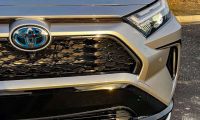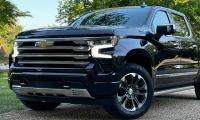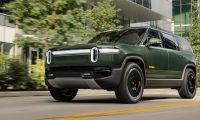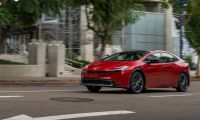Tesla has updated the active safety features of some of its new Model S cars to meet the minimum requirements of the Insurance Institute for Highway Safety (IIHS). This is partly in response to the Model S failing to earn the Top Safety Pick Plus designation during recent testing by IIHS.
Tesla Safety Test Background
During its testing, the Model S failed to earn the top safety scores that the Volt and Prius Prime did earn for three important reasons. One reason was that the company was confusing owners, and non-profit testing groups like IIHS and Consumer Reports by selling models equipped with various versions of Autopilot. Some new Model S cars sold over the past 6 months were not shipped with forward collision prevention and emergency automatic braking. This technology may have prevented the deaths of children and adult in a 2014 crash in which a Tesla Model S rear-ended a Toyota Corolla, killing the belted children.
Tesla Stopped Adding Safety System
Due to the confusing status of this now common safety technology, Tesla's Model S was recently downgraded by Consumer Reports. Automatic emergency braking is now standard on many affordable vehicles like the Toyota Corolla, Toyota RAV4 and Toyota Camry. It is an option on many Subarus priced in the low to mid $20Ks. Almost every competitor that Tesla's Model S has now comes with the technology, and has for many years.
The latest in this ongoing saga of Tesla promoting its cars as the safest available, but failing to earn to safety ratings by IIHS and is that Tesla has updated its new cars to have a system that works to 28 MPH. That number is the speed at which IIHS tests. Most cars with automatic emergency braking work at higher speeds and every car with adaptive cruise control has a system that can slow the car at highway speeds. Tesla is promising yet another update at some point in the future to add this capability to its premium cars. Real-world studies have proven that automatic emergency braking reduces accidents and prevents injuries.
Other Tesla Safety Test Issues
The second most significant reason Tesla has not yet earned the IIHS Top Safety Pick Plus rating is that it did not earn a "Good" rating in the small frontal overlap crash test. Again, something that almost every affordable car does earn today. Tesla acknowledged that its Model S was deficient in this key safety area and promised to make changes and then submit the Model S for retesting. That has been done, but we have not heard any good news from Tesla regarding the results. IIHS plans to summarize the results of the updated crash test soon.
Also Watch: Tesla's Automatic Emergency Braking Saves The Car From a Crash and click to subscribe to Torque News Youtube channel for daily automotive news analysis.
That will leave headlights that do not meet the requirements for the top score. We have not heard any news from Tesla regarding updating the headlights.
John Goreham is one of the senior Automotive Reporters at Torque News. Please, follow John at @JohnGoreham on Twitter and send him tips.












